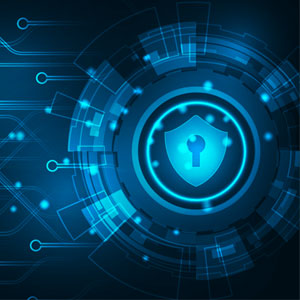THANK YOU FOR SUBSCRIBING

Navigating the Storm: Key TechnologyCapabilities to Master
Shanker V Selvadurai Vice President & CTO, IBM Technology, Asia Pacific


Shanker V Selvadurai Vice President & CTO, IBM Technology, Asia Pacific
Organisations, big and small, have entered a potentially long and perfect storm. Leaders of these enterprisesare facing a confluence of structural uncertainty - geopolitical, economic, and existential - each reinforcing the other. Nevertheless, for most enterprises, this is an opportune timeto focus on strengthening core competencies and becoming more efficient.Besides building resiliency in their business model, navigating successfully through the turbulence, will require maturing and masteringtechnology capabilities in 3 key areas –datadriven decisions, automation at scale andzero-trustsecurity.
With increasing market and competitive pressures, access to the right data at the right time is critical to delivering exceptional customer experiences as well asproviding valuable business insights. However, datathat is complete, current, and accurate is imperfectly accessible in most organisations. Real-timedecisions and actions require data hosted inmultiple locations, stored in different formats and sometimesonly available through intermediaries under restrictive conditions.Combinedwith data privacy and regulatory requirements, addressing these challenges require rethinking where and how data is captured, processed, and stored.
A dataarchitecture that supports consistent data capabilities across the organisation’s network –on-premises and multiple cloud environments–is needed.The right data should be available “on the tap” at the right time and at the right place.There should be no expensive movement of data to perform analytics;different business units should own and manage their own data without having to consolidate platforms;and decisions can be made more real-timeand closer to the point of interaction or engagement.Much of this must be achievedwhile continuing tomaintain enterprise grade data governance, privacy, and trust.
In March 2022, the World Health Organization (WHO) reported more than 6 million people deceased due to Covid-19 pandemicrelated issues, while millions of others are dealing with the long-term effects of the pandemic.This and the emergence of new variants is continuing to cause major workforcedisruptions particularly in the manufacturing, logistics and healthcare sector. Both employers and employees are dealing with challenges related to immigration disruptions, shift in workers’ expectations and mental health issues.Thelabour volatility is having a direct impact on organizational productivity, economic growthand probably, thesociety as a whole.
Automationis a viable solution to mitigate risks associated with labour uncertainties and talent supply. The infusion of AIenables the scaling ofautomation in industries forced to rely on a reduced workforce, or intentionally trying to minimize human interaction.However, this becomes complex in a hybrid world where different parts of a single application or service reside in multiple cloud environments, in a data centre on-premises or at the edge.Managing the processes and resources across these different physical locations and optimising the performance of the hybrid applicationto deliver on the expected service level can be challenging.
When the pandemic began, millions of employees started to work from home and are continuing to do so. Everywork-from-home employeeor hybrid worker connecting remotely represents an expansion of an organisation’s attack surface and creates new openings for threat actors. Perimeter centric security models cannot cope with the dynamic nature of thisincredibly large attack surface.In addition, these attacks move fast and infect machines in seconds.The problem is exasperated with multiple different security tools in the organisation that generate alerts on the same attack,making it difficult to understand the incident
Organisations need to modernise their threat detection and response capability. Silos need to be eliminated to gain visibility across data sources – from the cloudto core systems. Workflows must be unified without the need to pivot between tools. With the zero-trust security approach, every person, device and applicationis blocked from accessing every part of the network until the person, device and applicationis all authorized.This strategy, combined with automation and AI, will empower organisationsto continuously monitor for attacks, accurately detect threats, and rapidly orchestrate response to contain, remediate and recover from security attacks.
Strengthening core capabilities in data, automation and securityis critical to enablingcompanies to better serve their customers and find new sources of value during this period of change and uncertainty. The abovecompetencies are also the foundation for accelerating innovation by leveraging other exponential technologies like 5G, edge computing, Web3 and quantum computing.They are equally important to support new business imperatives like sustainability. These are extraordinary times, and it is important that we consciously and purposefully rethink architectural and technology decisions, not just to weather thestorm but to come out better and stronger.
Weekly Brief
I agree We use cookies on this website to enhance your user experience. By clicking any link on this page you are giving your consent for us to set cookies. More info
Read Also













